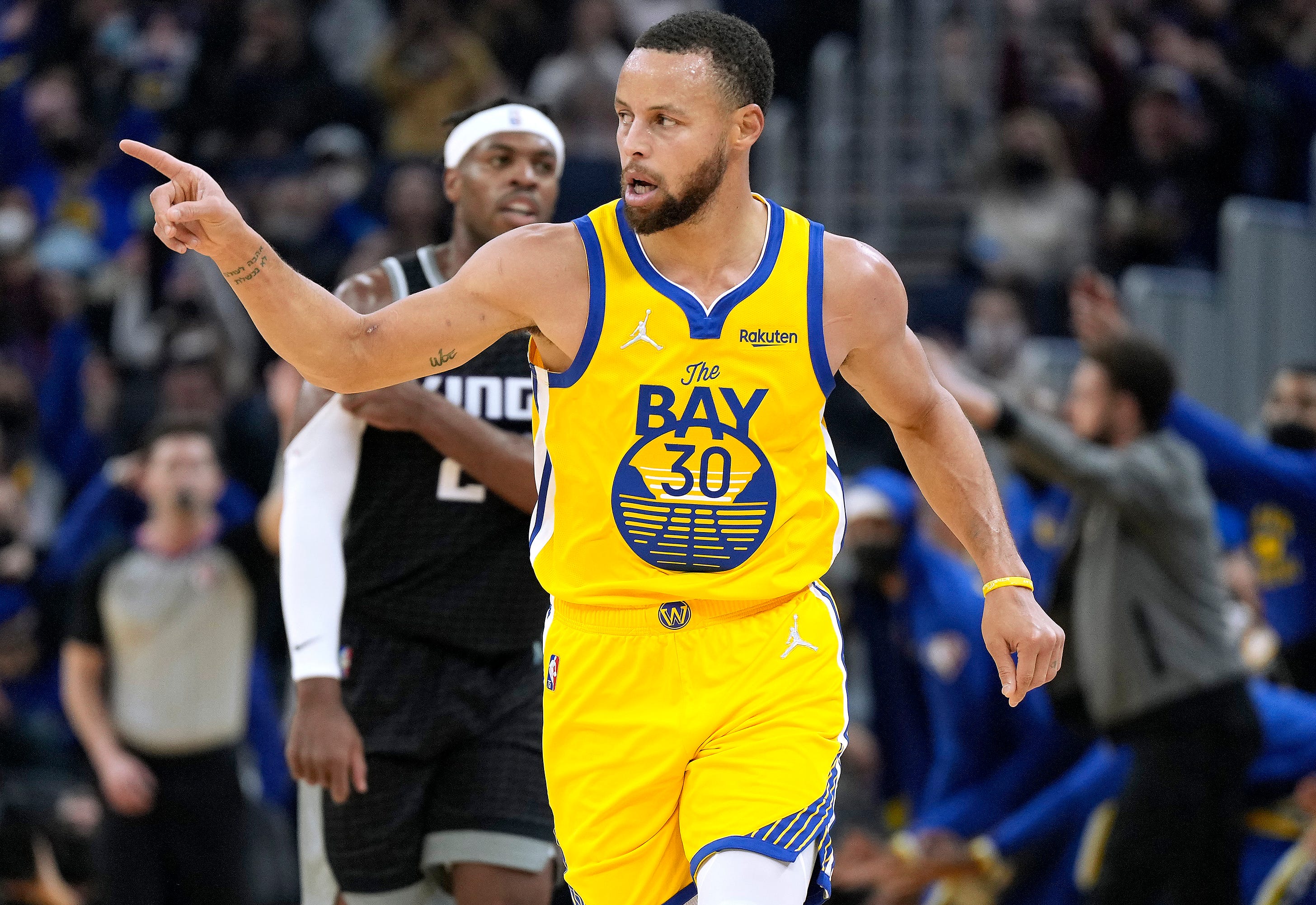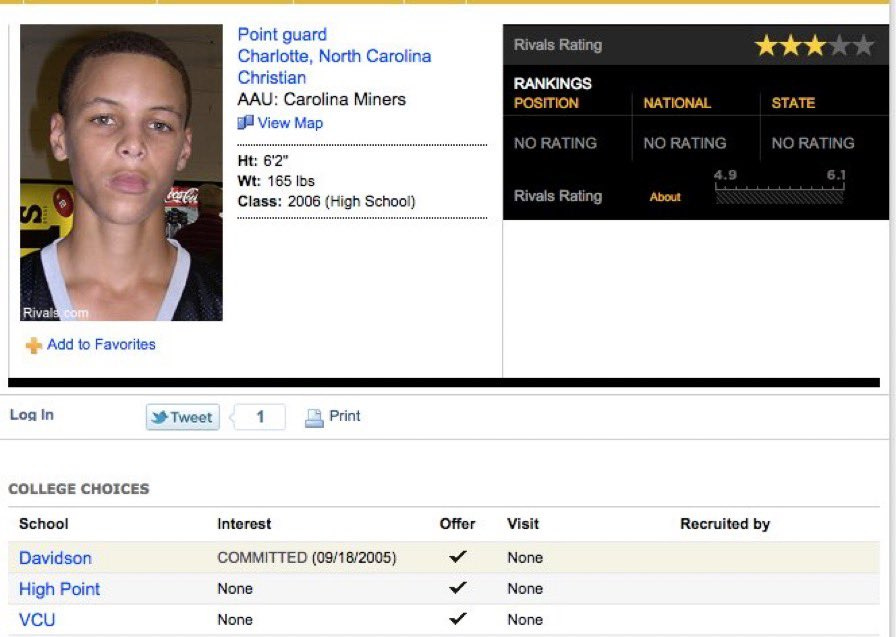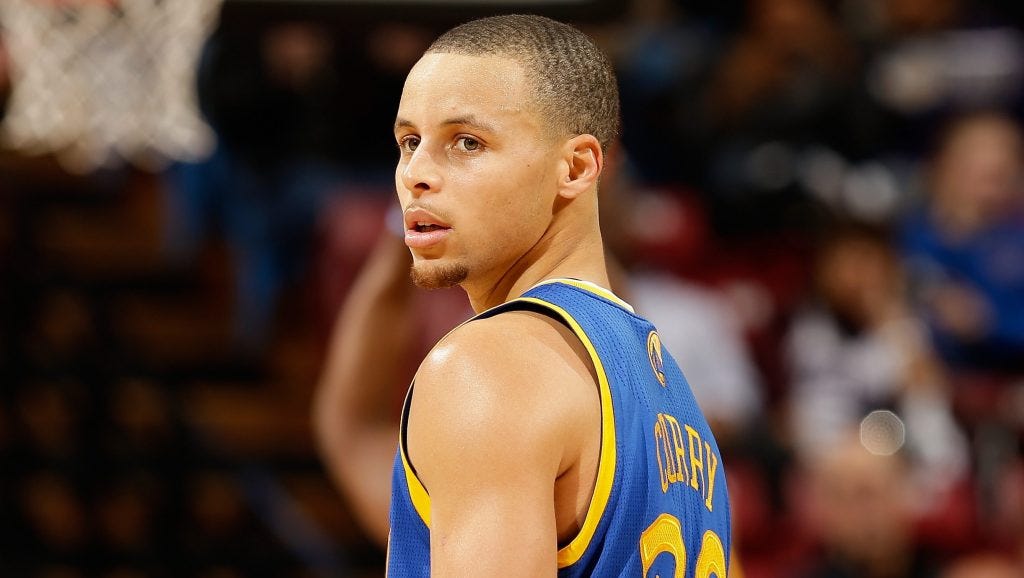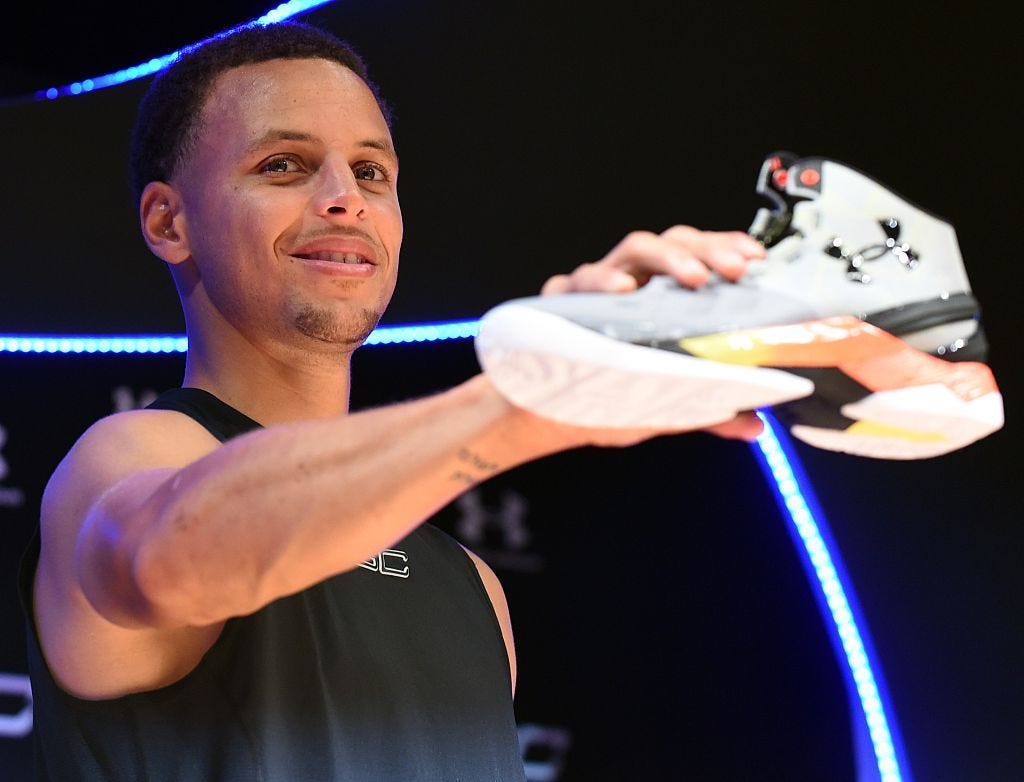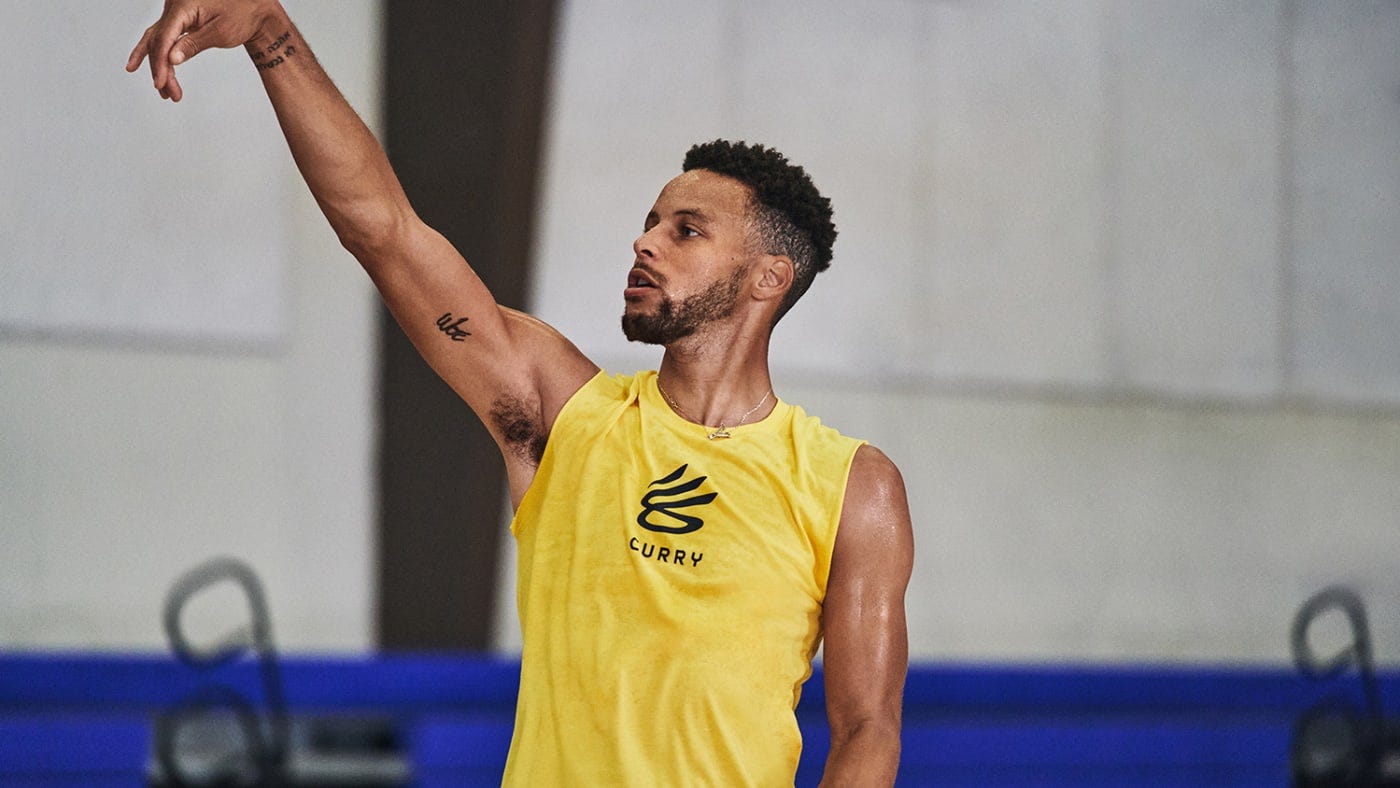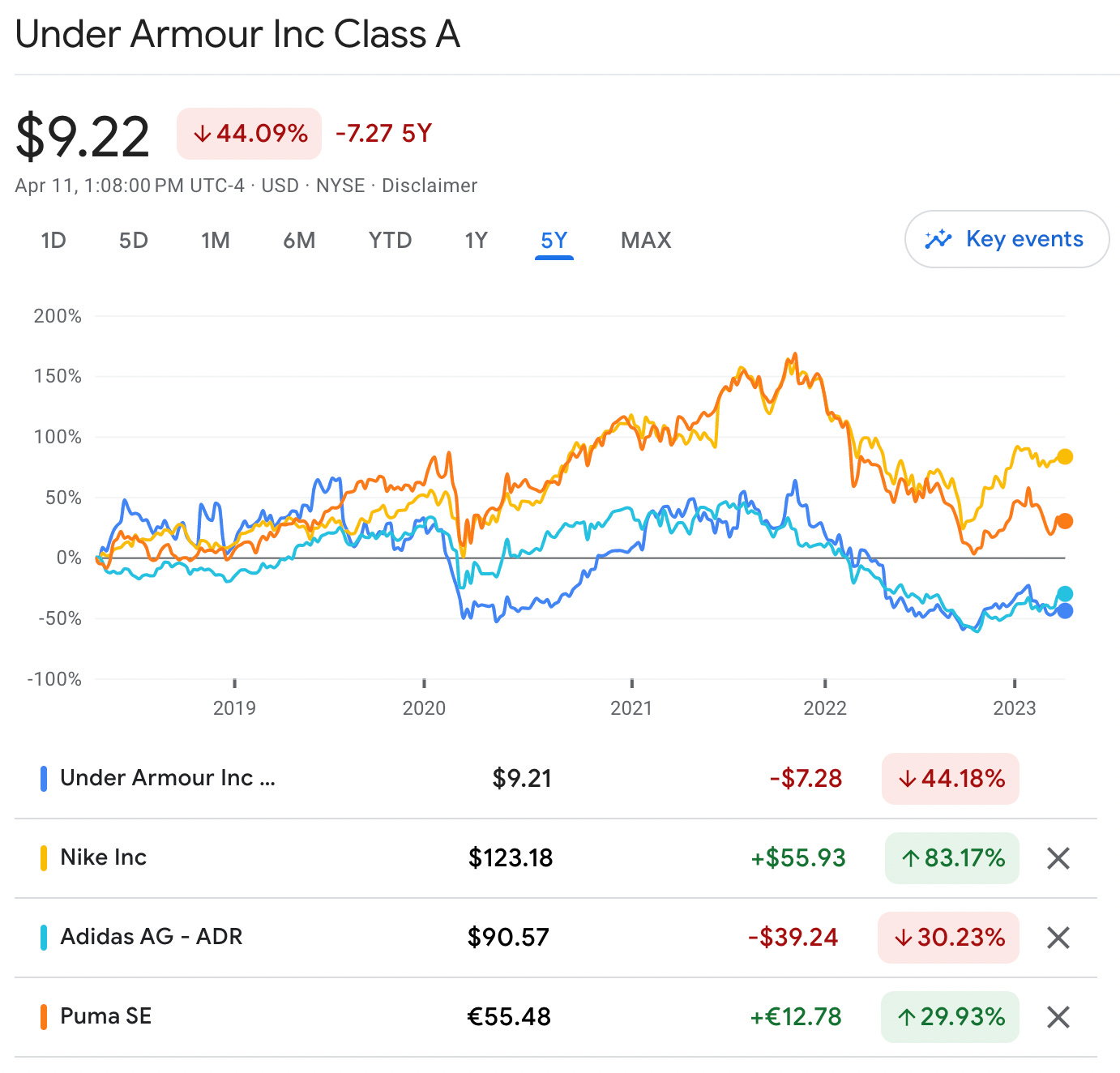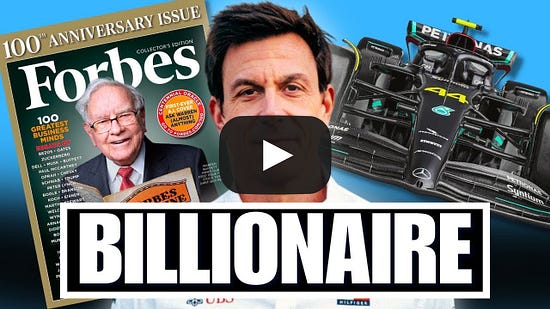The Financial Details Behind Stephen Curry’s Lifetime Deal With Under Armour
Huddle Up is a 3x weekly newsletter that breaks down the business and money behind sports. If you are not already a subscriber, sign up and join 100,000+ others who receive it directly in their inbox each week. Today At A Glance:Stephen Curry recently signed a long-term contract extension with Under Armour. Today’s newsletter breaks down the details behind the deal, including Nike’s billion-dollar mistake and how a mix of annual base pay, equity, royalties, and incentives could earn Curry over $500 million in compensation. This newsletter is also available via podcast on Apple or Spotify. Today’s Newsletter Is Brought To You By Goldin!The world’s top 500 sports cards have an ROI of 855% over the last 15 years, compared to just 175% for the S&P 500 — and there is no better place to start or build your collectible portfolio than Goldin. Goldin is the leading and most trusted destination for some of the most significant pieces of sports and pop culture collectibles. Their marketplace is open 24/7, they have weekly auctions starting at just $5, and there is something for every collector. And here’s the best part: Goldin is offering No Marketplace Fees for items sold up to $10k. So vault and list your items on Goldin’s Marketplace now to enjoy this limited-time offer. I’m a big fan, and I think you will be too. Friends, Stephen Curry was on top of the world in 2016. The Golden State Warriors were just starting their dynasty after winning the NBA title, and Curry was about to take home his first MVP trophy following one of the most historic seasons in league history. Not a single NBA player sold more jerseys than Curry that year — not Durant, Irving, or even LeBron — and only one person was selling more sneakers: Michael Jordan. 2016 Basketball Sneaker Sales
In fact, Stephen Curry was so popular in 2016 that Morgan Stanley equity analyst Jay Sole said Curry’s partnership with the brand could potentially be worth $14 billion. But this snapshot in time only tells half the story behind Stephen Curry’s shoe deal. The real story involves a rare misstep in negotiations by Nike, the birth of a generational athlete, and a lifetime deal that could be worth more than $500 million. The Stephen Curry story started in 2009. The North Carolina native was just a three-star recruit in high school and didn’t receive a single Division I scholarship offer. So Curry went to Davidson and exploded onto the scene during his senior year. Davidson started the season 4-6 after losing to top-10 teams like North Carolina, Duke, and UCLA. But the Wildcats didn’t lose another regular season game, finishing with 22 wins in a row and Curry leading the way with an average of 26 points a game. The Davidson Wildcats then went on a magical run in the NCAA tournament, with Curry taking a group of future lawyers, doctors, and accountants to the Elite Eight. “In 2008, when you think about it, Facebook had just started,” says Curry’s former Davidson teammate Jason Richards. “There was no Twitter really, there was no Instagram, there was no Snapchat. Social media wasn’t a big thing. So the fact Steph took the nation by storm, it was newspaper articles, people texting, people calling and leaving voice messages, sending emails. That sounds ancient, but people started getting noticed because we were everywhere. We were on TV, we were in the paper. I can only imagine what it would be like if we had social media back then.” Curry was then drafted 7th overall in the 2009 NBA Draft by the Golden State Warriors — yet many people still weren’t sold on the skinny guard from Davidson. “[Curry] doesn’t have the upside,” said college basketball analyst Doug Gottlieb. “Ricky Rubio, Brandon Jennings, Johnny Flynn, Jeff Teague, are all more athletic.” But to be fair, absolutely no one could have predicted what would happen next. As a reminder, there are three main shoe and merchandise deals in the NBA.
This is important because when Stephen Curry was drafted by the Golden State Warriors, he signed a cash deal with Nike. The exact dollar figure is unknown, but it probably included a small annual payment (less than $1 million) and free merchandise. Curry’s career then got off to a rocky start. He made more 3-pointers than any rookie in NBA history and even recorded a then career-high 42 points in the team’s final game. But then injuries hit, and Curry underwent multiple surgeries on his ankle while playing in just 26 games during the lockout-shortened 2011-12 NBA season. Still, the Warriors were impressed enough and decided to gamble on Curry’s ability to stay healthy by signing him to a four-year, $44 million contract to remain in Golden State. And Curry delivered — he started 78 games that season, averaged a career-high 22.9 points per game (7th in the NBA), and set a new single-season NBA 3-point record. And with his Nike deal up for renewal that summer, things were looking bright, right? Curry headed into the 2013 offseason under contract with the Warriors, but his Nike contract was up for renewal, and all signs pointed to him staying with the Swoosh. “Curry was a Nike athlete long before 2013, though,” Ethan Strauss wrote for ESPN in 2016. “His godfather, Greg Brink, works for Nike. He wore the shoes growing up, sported the swoosh at Davidson. In his breakout 54-point game at Madison Square Garden on Feb. 28, 2013, he was wearing Nike Zoom Hyperfuse, a pair of sneakers he still owns, tucked away in his East Bay Area home, shielded from the light of day.” But things don’t always go as planned. Nike flew into San Francisco to meet with Curry and his family, and the company (unintentionally) made their feelings clear. “The August meeting took place on the second floor of the Oakland Marriott, three levels below Golden State’s practice facility,” Strauss wrote for ESPN. “Famed Nike power broker and LeBron James adviser Lynn Merritt was not present, a possible indication of the priority — or lack thereof — that Nike was placing on the meeting.” The presentation then kicked off with the one Nike official accidentally addressing Stephen as “Steph-on” — offering no follow-up apology either — and things only got worse when a repurposed PowerPoint slide still contained Kevin Durant’s name. “I stopped paying attention after that,” Curry’s father told ESPN. “[Nike] has their certain tiers of athletes. They have Kobe, LeBron, and Durant, who were their three main guys. If he signed back with them, we’re on that second tier.” So Stephen Curry shocked the world and left Nike, signing a deal with Under Armour worth $4 million annually (an offer that Nike refused to match, anyway). Now, it’s important to remember that Under Armour was essentially irrelevant in basketball when they signed Stephen Curry. Sure, the company was doing nearly $2 billion in annual revenue at the time of the deal. But they owned just 0.35 percent market share in the U.S. basketball retail market, and their most prominent endorsers were Brandon Jennings, Kemba Walker, Raymond Felton, and Greivis Vasques. But then the Golden State Warriors dynasty started — and everything changed. The Warriors hired Steve Kerr as their new head coach heading into the 2014-15 season. He brought along a fast-paced offense that gave shooters like Stephen Curry and Klay Thompson the ultimate amount of freedom, and the Warriors dominated. Curry broke his own record for three-pointers in a season, and he sat out 17 fourth quarters throughout the season due to Golden State’s wide margin of victory. The Warriors finished that season by winning their first championship in 40 years. Then, the following year, the Warriors became the first team in NBA history to win 73 games in a single season, and Stephen Curry was unanimously named league MVP. This helped him become one of the world’s most famous athletes virtually overnight. Curry had the NBA’s most popular jersey that year. He was gaining more than 1 million Instagram followers every month during the season. His signature shoe, The Curry One, did $153 million in sales over just three months, and Under Armour’s entire footwear business saw a 350% increase in sales year-over-year. So Under Armour decided it was time to make Curry the face of its business, signing him to a 9-year, $215 million extension that included an equity stake in the company. Stephen Curry’s Sneaker Deal History
But where Michael Jordan was able to catapult Nike’s business into a different stratosphere, Stephen Curry’s popularity hasn’t been enough for Under Armour. Stephen Curry has undoubtedly become one of basketball’s most popular and successful superstars over the last decade, but Under Armour has struggled. The company has routinely mismanaged inventory and is currently facing a class action lawsuit from shareholders over allegations about inflated sales figures. Under Armour also paid $9 million to the SEC for disclosure failures. The company’s culture has come under fire for allowing employees to charge strip club visits to corporate cards, and their market cap has fallen significantly behind its competitors. Market Cap By Brand (2023)
Furthermore, Under Armour’s stock has plummeted 44% over the past 5 years. It now sits 83% below its all-time high of $52.86 in 2015, and the equity has significantly underperformed competitors like Nike, Adidas, and Puma. Add in the fact that Under Armour almost lost Curry in 2018 due to low sales of the Curry 3s, and the company had to make a drastic move to keep the superstar happy. So Under Armour agreed to launch The Curry Brand in 2020, a semi-independent brand within the Under Armour family — think of it like the Jordan Brand at Nike. Under Armour then hired a former Jordan brand executive to help run the Curry Brand. They allowed Curry to start signing college athletes to NIL deals, and they even started producing more golf and athleisure clothes with his own unique logo. That has helped mend their relationship. But more importantly, it has given Curry something that no other major brand can offer: an opportunity to build his own brand. So now Under Armour is doubling down. They recently signed Curry to a long-term partnership that reportedly has the opportunity to become a lifetime deal if certain revenue targets are met. Curry has also already been awarded $75 million in Under Armour stock, which vests in 2029 and 2034. And when you add up the annual base pay, his stock compensation, royalties, and on-court incentives, Under Armour founder Kevin Plank says the deal could end up paying Curry more than his entire $490 million in NBA career earnings. So while Under Armour may not have made the most of its opportunity after signing a generational NBA talent, Stephen Curry certainly benefited financially. If you enjoyed this breakdown, please consider sharing it with your friends. My team and I work hard to create quality content consistently, and every new subscriber helps. I hope everyone has a great day. We’ll talk tomorrow. Interested in advertising with Huddle Up? Email me. Your feedback helps me improve Huddle Up. How did you like today’s post? Loved | Great | Good | Meh | Bad Want More Detailed Sports Business Breakdowns? Subscribe To JPS.The Joe Pomp Show is a 3x weekly podcast where I break down the business and money behind sports. Think of it as the same high-quality work you read here, just deeper. There are exclusive interviews with people like Dana White, Lance Armstrong, and Troy Aikman, and you’re guaranteed to learn something new. How Mercedes F1 Boss Toto Wolff Became A BillionaireHuddle Up is a 3x weekly newsletter that breaks down the business and money behind sports. If you are not already a subscriber, sign up and join 100,000+ others who receive it directly in their inbox each week.
Read Huddle Up in the app
Listen to posts, join subscriber chats, and never miss an update from Joe Pompliano.
© 2023 |


